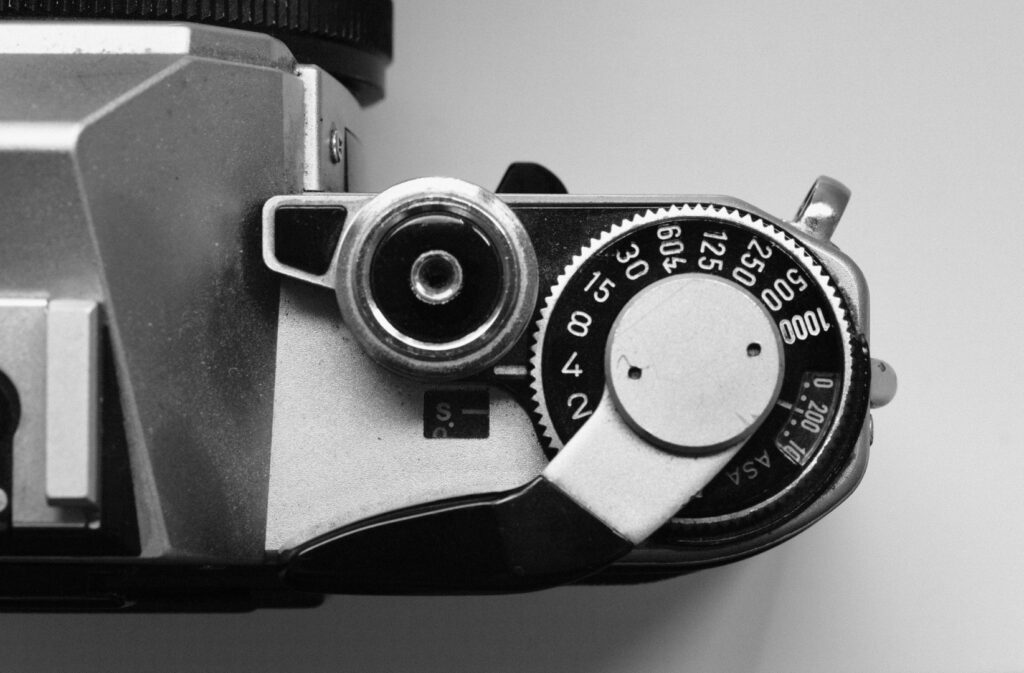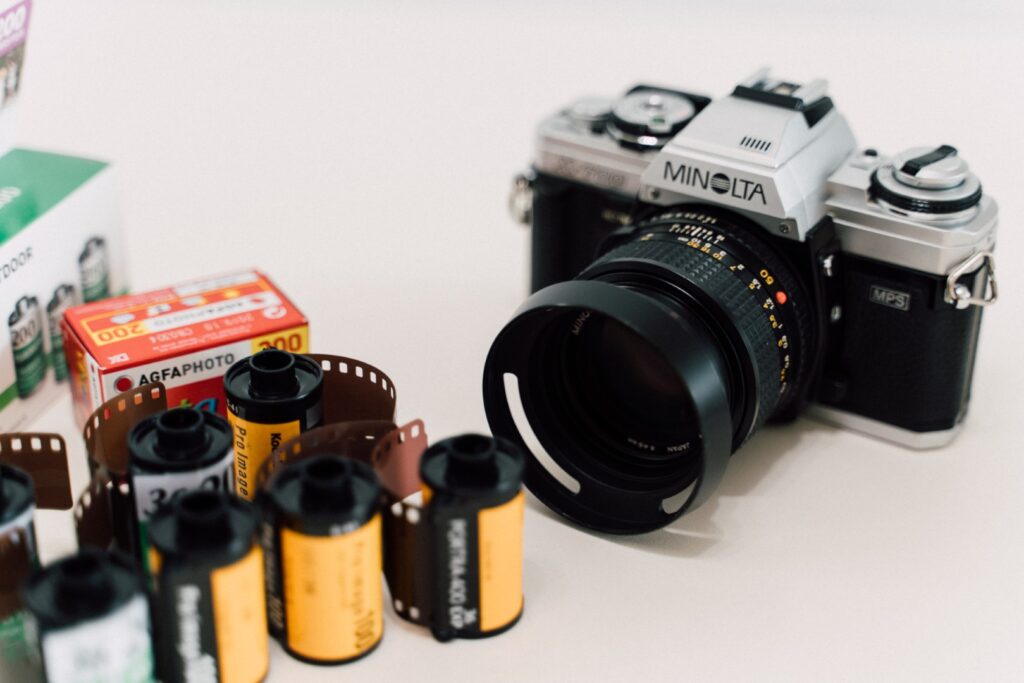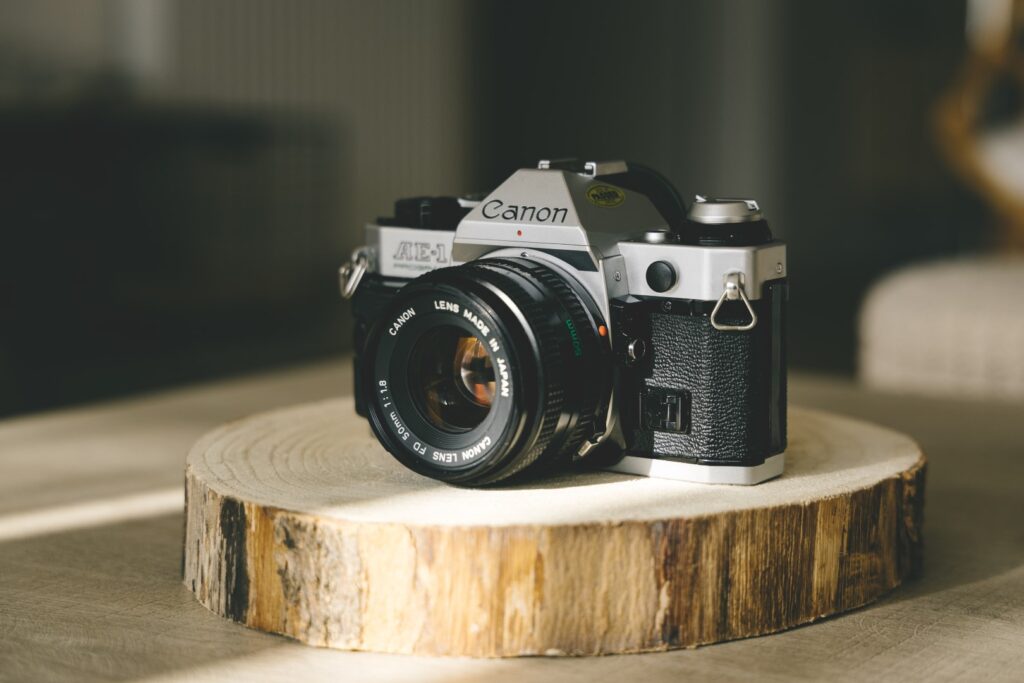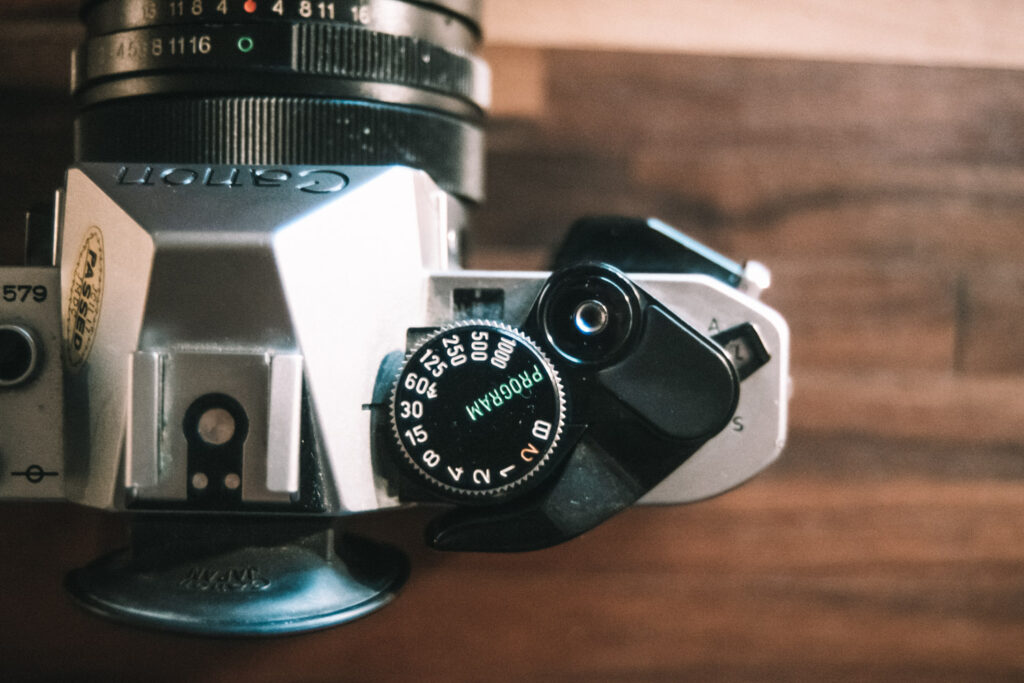The Canon AE-1, introduced to the world in 1976, marked a significant milestone in the history of 35mm film cameras. It was not just a camera; it was a perfect blend of innovative design, user-friendly features, and affordability that caught the attention of the masses. Its ground-breaking attribute was the inclusion of a microprocessor, a first in the world of cameras. This paved the way for automatic exposure controls that simplified the process of capturing perfectly exposed images, opening up photography to a much wider audience.
The AE-1, with its compact size and ease of use, quickly gained a reputation as a reliable companion for capturing life’s moments. Its popularity surged and it has continued to hold its ground in the face of the rapid advancement and proliferation of digital technology.
Today, the AE-1 still holds a special place in the hearts of many who appreciate the craft of film photography. However, its popularity and the resulting demand have pushed up prices, particularly for well-maintained units. As a result, those who wish to experience the AE-1’s unique attributes may find it challenging to acquire one within a budget. Check out our comprehensive article on the current market valuation of the Canon AE-1 for a deeper insight.
The Canon AE-1: Key Features
As we embark on our exploration of alternative options to the Canon AE-1, it is important to first understand the primary features that differentiate this camera. This understanding will serve as a baseline for comparing the alternative cameras and enable you to fully appreciate the unique qualities the AE-1 has to offer.
Auto-Exposure
The ‘AE’ in the Canon AE-1 stands for Auto-Exposure, a groundbreaking feature at the time of its release. Auto-Exposure allows the camera to automatically set the shutter speed based on the aperture you’ve chosen and the light levels measured by the camera’s light meter. This functionality significantly simplified the process of achieving a correctly exposed photograph, enabling users to focus more on composition and timing rather than intricate technical settings.
Abundance and Repairability
The Canon AE-1 was a massive hit during its era, resulting in high production numbers. This abundance has two significant advantages. First, it increases the likelihood of finding a secondhand model, albeit with prices varying based on the unit’s condition. Second, the widespread availability of the AE-1 means that spare parts are easier to find compared to lesser-known or more obscure models. This makes repairs and maintenance more straightforward and cost-effective, an important consideration for anyone investing in a vintage camera.
Lenses
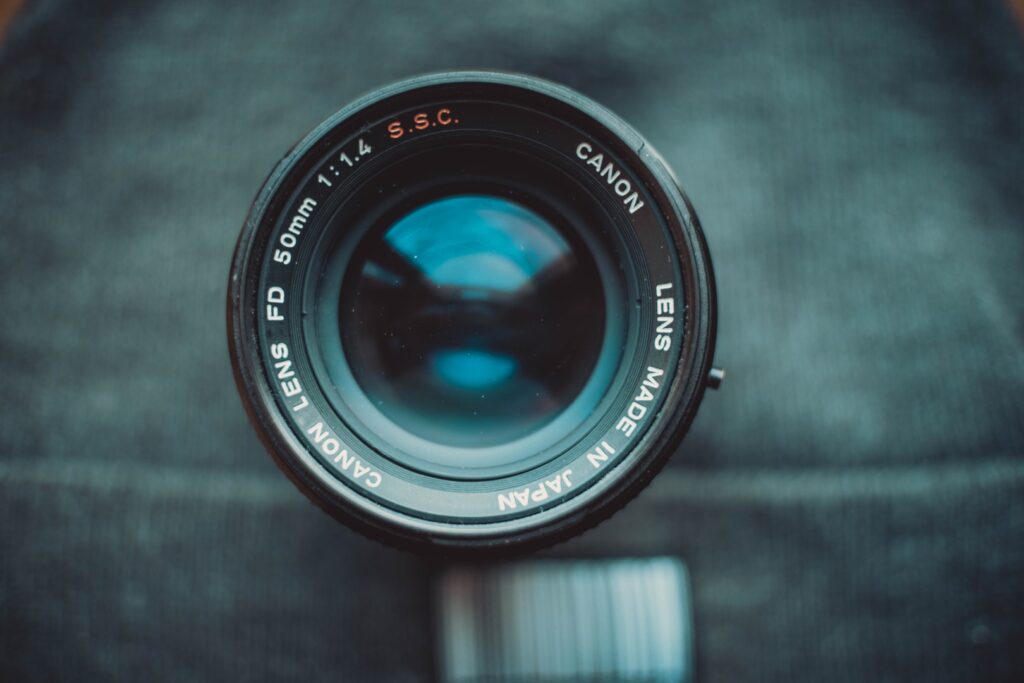
One of the key attributes of the Canon AE-1 is its compatibility with the Canon FD lens series. This lens system has been lauded for the exceptional quality of optics it provides, delivering sharp images with minimal distortions. From wide-angle to telephoto, the FD series encompasses a broad range of focal lengths, allowing photographers to capture a variety of scenes and subjects with precision and detail.
Availability is another point to consider. Due to the popularity and widespread use of the Canon AE-1 and other FD-mount cameras, there’s a considerable market for FD lenses. Whether you’re shopping online or browsing your local camera store, you’re likely to find a variety of FD lenses to choose from. Explore our article on the best FD lenses for the Canon AE-1 to find a good selection of options.
However, it’s important to note that the resurgence of interest in film photography and the AE-1’s enduring popularity have led to increased demand for these lenses, driving prices up in recent years. As such, while FD lenses are readily available, finding one at a bargain price can be a challenge.
Size and Weight
The Canon AE-1 boasts a compact and lightweight design, tipping the scales at just 590 grams. The relatively small form factor and weight make it an ideal camera for on-the-go photography. Whether you’re traveling, out on a street photography session, or simply capturing everyday life, the AE-1’s size and weight offer a balance of convenience and capability.
Canon AE-1 Alternatives: An Overview
When identifying alternatives to the Canon AE-1, the key considerations include not only the similarity of features but also the affordability aspect. The chosen alternatives should embody the AE-1’s defining traits, such as automatic exposure modes (either Shutter Priority AE or Aperture Priority AE), robustness, compatibility with a diverse lens range, and a compact, lightweight design, all while maintaining a lower price point.
Keeping these factors in mind, we’ve curated three models that serve as suitable, budget-friendly alternatives to the Canon AE-1:
- Olympus OM-2n: This model, launched in 1975, offers an Aperture Priority AE mode, echoing the AE-1’s emphasis on automated exposure. The Olympus OM-2n is recognized for its durable construction and compact nature. It’s part of the Olympus OM system, which comprises a broad variety of high-quality yet relatively inexpensive lenses.
- Nikon FE2: Unveiled in 1983, the Nikon FE2 provides both Aperture Priority AE and Shutter Priority AE modes, offering flexible exposure control. It is compatible with Nikon F-mount lenses, which are renowned for their quality and can be found at reasonable prices.
- Minolta X-700: Released in 1981, the Minolta X-700 features Programmed AE, Aperture Priority AE, and manual modes. This model’s compatibility with Minolta MD lenses presents photographers with an affordable range of lens choices.
Olympus OM-2n
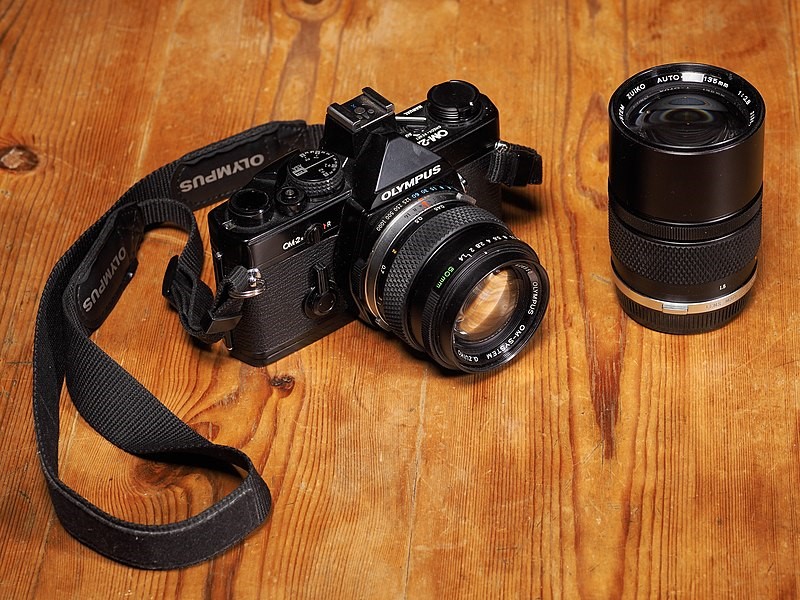
Introduced in 1975, the Olympus OM-2n quickly earned a reputation for reliability and robust performance. This camera stands out for its Aperture Priority AE mode, which allows photographers to control the depth of field while the camera takes care of the shutter speed. This functionality is akin to the AE-1’s shutter priority mode, offering automation that enables photographers to focus more on the composition and less on exposure settings.
The OM-2n is part of the Olympus OM system, which is known for a wide variety of high-quality lenses. While the system might not be as vast as Canon’s FD lens range, the OM lenses still provide a wealth of creative options for photographers. Furthermore, the OM-2n’s size and weight are comparable to the AE-1, making it an excellent choice for photographers who value portability.
Nikon FE2
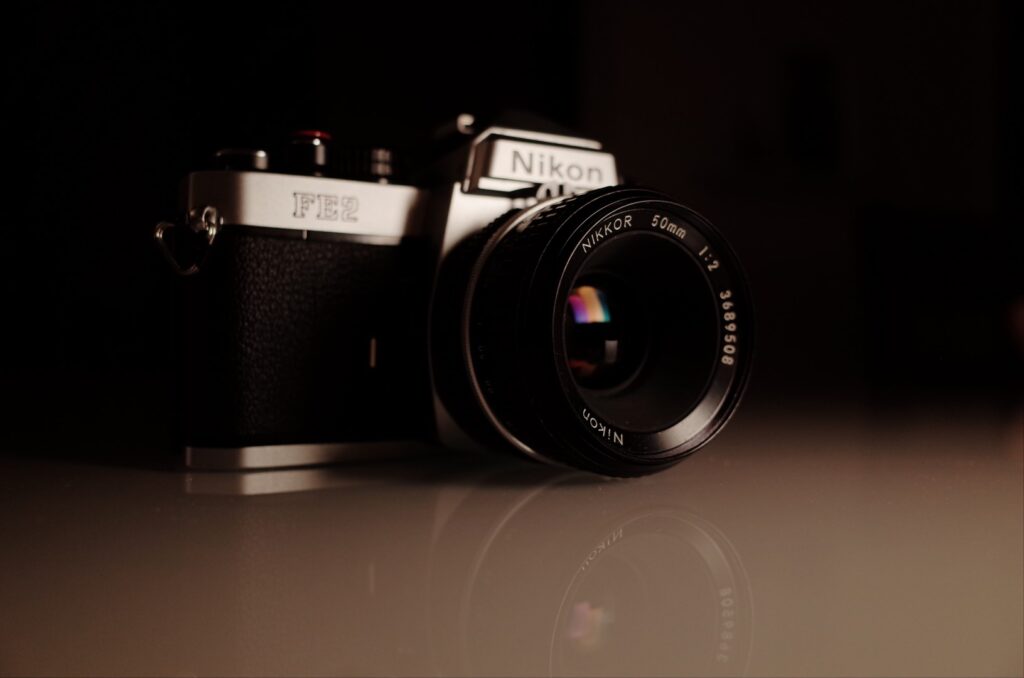
The Nikon FE2, released in 1983, is a highly versatile camera offering both Aperture Priority AE and Shutter Priority AE modes, providing even greater control over exposure than the Canon AE-1. This flexibility allows photographers to select the optimal settings for their specific shooting scenarios.
The FE2 is compatible with Nikon’s F-mount lenses, which offer a broad selection of options, including prime, zoom, and special-purpose lenses. Nikon’s lenses are known for their quality, and despite being older, many still deliver excellent performance today. While the camera itself is slightly heavier than the AE-1, it’s still a reasonable option for photographers needing a robust and versatile camera on a budget.
Minolta X-700

The Minolta X-700 offers a range of exposure modes, including Programmed AE, which was quite advanced for its time. Like the AE-1, this provides the benefit of automated exposure, reducing the need for manual adjustments and allowing photographers to concentrate on their subjects and compositions.
Minolta MD lenses, compatible with the X-700, are well-regarded for their sharpness and overall image quality. These lenses are generally more affordable compared to the Canon FD lenses, making the X-700 a good choice for budget-conscious photographers.
Each of these three alternatives presents a unique blend of features at a lower price point than the Canon AE-1. Whether it’s the Olympus OM-2n’s aperture priority automation, the Nikon FE2’s dual AE modes, or the Minolta X-700’s advanced exposure programming, photographers seeking a cost-effective alternative to the AE-1 have a variety of excellent options.
Comparative Analysis: Canon AE-1 and its Alternatives
A side-by-side comparison of the key features of the Canon AE-1 and its alternatives can help illuminate their similarities and differences, and guide a decision about which camera best fits your needs and budget. Here’s a structured comparison chart:
| Camera Model | Year of Release | Automatic Exposure Modes | Lens Compatibility | Key Features |
|---|---|---|---|---|
| Canon AE-1 | 1976 | Shutter Priority AE | Canon FD lenses | Light meter, Viewfinder, Self-Timer |
| Olympus OM-2n | 1975 | Aperture Priority AE | Olympus OM lenses | TTL Direct Light Metering, Viewfinder, Self-Timer |
| Nikon FE2 | 1983 | Aperture Priority AE, Shutter Priority AE | Nikon F-mount lenses | TTL Center-Weighted Metering, Viewfinder, Self-Timer |
| Minolta X-700 | 1981 | Programmed AE, Aperture Priority AE, Manual Mode | Minolta MD lenses | TTL Center-Weighted Metering, Viewfinder, Self-Timer |
The Olympus OM-2n offers Aperture Priority AE, providing a different control style that some photographers might prefer. Its lenses, while not as numerous as Canon’s, still offer plenty of versatility.
- Pros: Aperture Priority AE, robust and compact design, range of high-quality OM lenses available, slightly cheaper
- Cons: Smaller range of compatible lenses compared to Canon AE-1
The Nikon FE2 is notable for its dual AE modes, providing even more flexibility in exposure control. Its compatibility with Nikon F-mount lenses opens up a world of creative possibilities.
- Pros: Both Aperture and Shutter Priority AE, wide selection of Nikon F-mount lenses, sturdy design
- Cons: Slightly heavier than the Canon AE-1
Lastly, the Minolta X-700 is notable for its advanced Programmed AE mode, coupled with Aperture Priority AE and manual modes, providing a blend of automation and control. Its compatibility with Minolta MD lenses, which are typically more affordable than Canon FD lenses, makes it an attractive option for budget-conscious photographers.
- Pros: Programmed AE mode in addition to Aperture Priority AE and manual modes, compatible with affordable Minolta MD lenses, robust design
- Cons: Not as well-known as Canon or Nikon, fewer lens options compared to Canon and Nikon
Final Thoughts
In the end, the choice of a camera depends on your individual needs and preferences. You might prioritize a specific AE mode, lens availability, or a particular price point. These three cameras all offer reliable performance, quality image output, and a degree of automation in exposure control. It’s about finding the right balance that suits your photography style and budget. Each of these cameras can serve as a faithful companion in your photographic journey, fostering growth and creativity with every shot.

